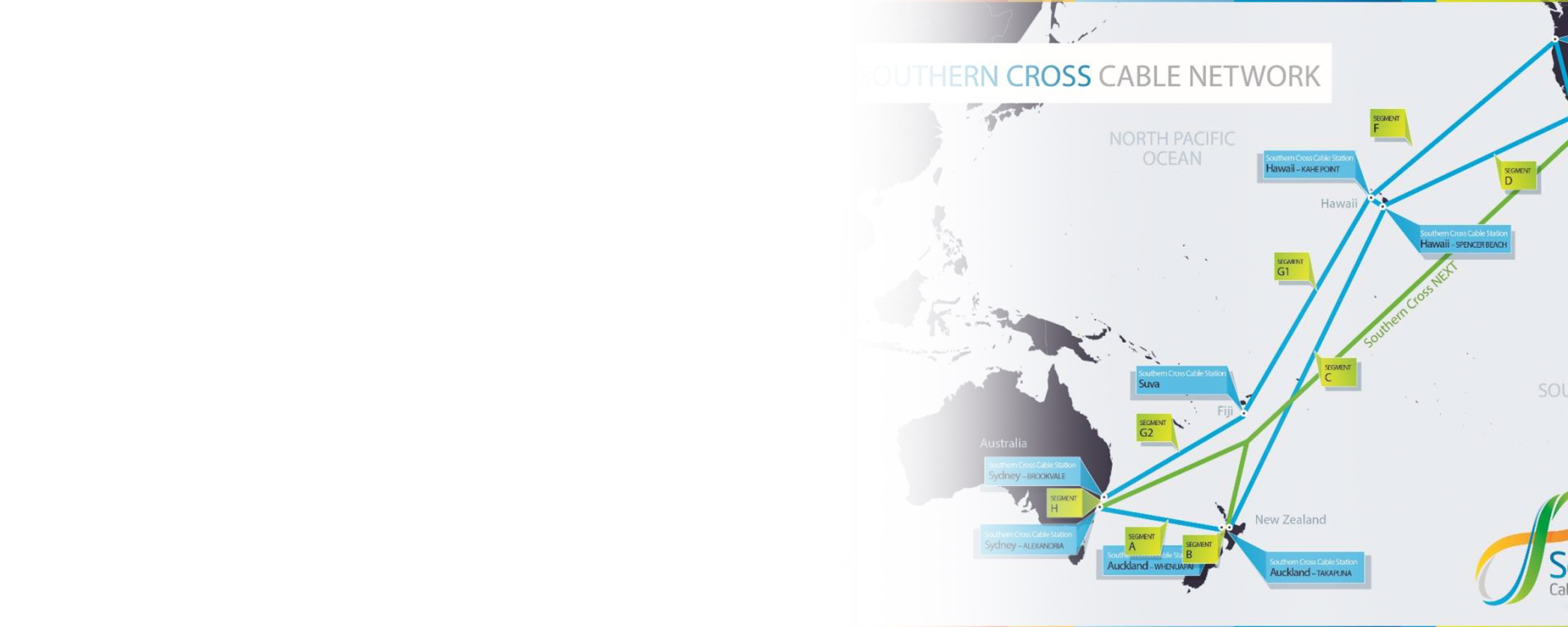The Customer
Southern Cross Cable Network (SCCN) operates a vital Trans-Pacific submarine cable network connecting Australia, New Zealand, Fiji, and Hawaii to the internet backbone on the United States West Coast. This network plays a crucial role in providing carrier-neutral services to carriers, internet and content service providers, and corporations.
SCCN faced a significant challenge: their telecommunications facility was equipped with aging CRAC (Computer Room Air Conditioning) units, some over 20 years old. Given the mission-critical nature of their operations, the need for a reliable replacement solution was urgent.
The Challenge – hidden cost of running legacy and oversized cooling equipment
SCCN reached out to STULZ Oceania, known for their expertise in high-performance cooling solutions, to address this pressing issue. But rather than simply swapping out the old units for new ones, STULZ Oceania saw an opportunity to deliver a more valuable and efficient solution.
To get started, the team at STULZ Oceania conducted a thorough site audit. They carefully documented the existing CRAC unit models, reviewed the technical data and specifications, and calculated the overall cooling capacity. Then they assessed the IT heat load in the space and evaluated the room layout and airflow distribution.
What they discovered was eye-opening: the installed CRAC cooling capacity far exceeded the actual heat load of the facility. John Jakovcevic, managing director at STULZ Oceania, says: “It was clear the existing cooling equipment was oversized and inefficient, so our objective was to deliver a customised solution that not only met SCCN's current needs but also optimised their energy consumption and reduced costs.”
Armed with this critical insight, STULZ Oceania prepared a comprehensive report for SCCN, and proposed a new, optimised unit arrangement that would be far more aligned with the actual heat load requirements.
Our Solution – new tech and improved efficiency
Rather than going for a straightforward like-for-like replacement, STULZ Oceania recommended installing fewer units with lower cooling capacity, confident that this setup would efficiently meet all cooling and airflow distribution requirements.
The heart of the solution was the installation of five ASD 412 AS units from the CyberAir range. These air-cooled DX CRAC units were state-of-the-art, featuring a nominal cooling capacity of 41 kW each, downflow configuration, and inverter compressors for variable capacity control.
STULZ Oceania's solution promised substantial power savings due to lower airflow and associated fan power consumption. The newer EC (Electronically Commutated) fans, replacing the older forward curve scroll fans, further enhanced power savings. Additionally, the variable capacity inverter compressors allowed for precise load matching and increased energy efficiency.
The Result – huge energy and capital cost savings
The results were nothing short of transformative for SCCN. The client enjoyed both lower capital investment costs and reduced running expenses, marking a significant improvement over the old system. Here are the specific outcomes:
- Power Savings: Facility’s power demand reduced by over 20% through enhanced cooling efficiency.
- Capital Cost Savings: Approximately 50% savings compared to a like-for-like replacement solution.
- CO2 Emissions Reduction: Power savings reduce associated CO2 emissions by approximately 346 tonnes per year.
- Improved Usability: The control displays were lowered, making maintenance easier and reducing workplace health and safety risks.
- Additional Space: The reduced roof space taken up by outdoor condenser units allowed for the installation of additional solar panels.
“The project has been a tremendous success. STULZ Oceania’s experienced project management team ensured a smooth rollout, delivering a solution that was perfectly tailored to our needs,” remarked Barry Miller, Head of Facilities and Risk from SCCN. “We've observed substantial cost savings and efficiency improvements, and the new system has integrated seamlessly into our operations.”
About Southern Cross
Southern Cross Cable Network provides fast, direct, and secure international bandwidth from Australia, New Zealand, and the Pacific to the heart of the Internet in the USA.
The Southern Cross Cable Network comprises three diverse submarine communications cables from Oceania to the US West coast where global Internet hubs are located. The Southern Cross NEXT cable is the latest high performance express route in the Southern Cross eco-system, providing data centre connectivity between Sydney, Auckland, and Los Angeles. Further information on Southern Cross can be found at www.southerncrosscables.com.
Media contact: contact(at)sccn.co(dot)nz

